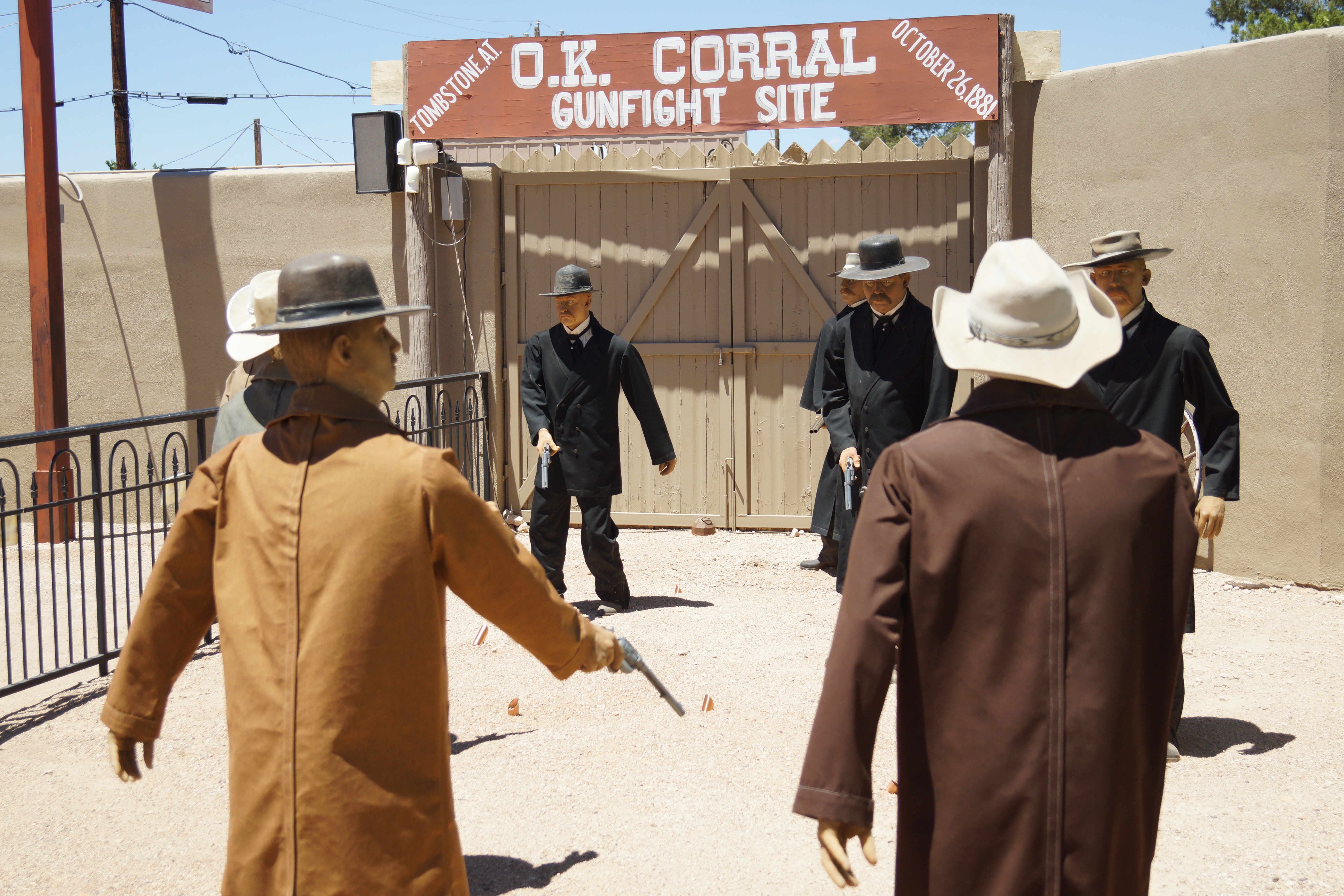The infamous gunfight at the O.K. Corral in Tombstone, Arizona, stands as one of the most emblematic confrontations in American lore, illustrating a fusion of personal grudges and significant political friction. On October 26, 1881, the clash brought the Earp brothers—Wyatt, Virgil, and Morgan—alongside their confidant Doc Holliday into a violent showdown with members of a faction known as “the Cowboys,” which included Tom McLaury, Frank McLaury, Ike Clanton, and his young sibling Billy Clanton.
The brewing tensions leading up to this iconic shootout were heavily influenced by divergent stakes in Tombstone’s resource management; the Earps advocated for Republican principles which favored centralized oversight and regulatory policies, while the Cowboys favored Democratic principles advocating for greater independence and a laissez-faire governance approach. This stark ideological split catalyzed violent altercations and rising threats from both parties.
During the gunfight, three Cowboys—Tom McLaury, Frank McLaury, and Billy Clanton—were killed, while Virgil Earp, Morgan Earp, and Doc Holliday sustained injuries. Astonishingly, Wyatt Earp came out of the fracas unharmed. This brutal encounter not only encapsulated the essence of frontier justice but also highlighted how political divisions could explosively intersect with local jurisdictional disputes.

